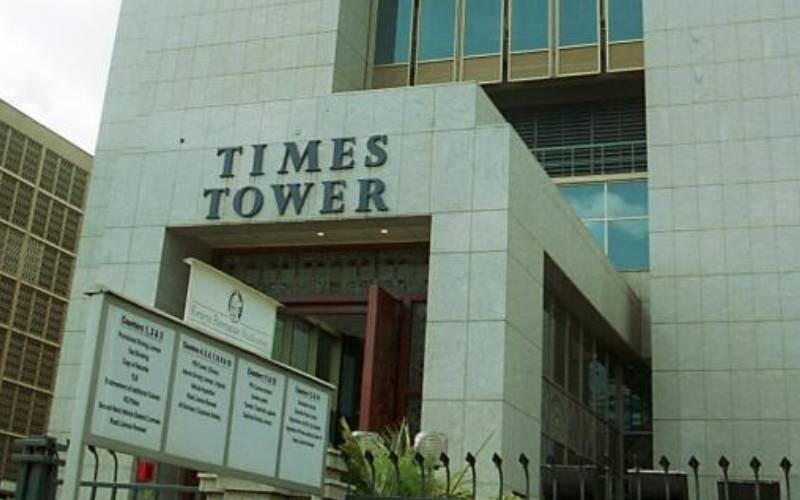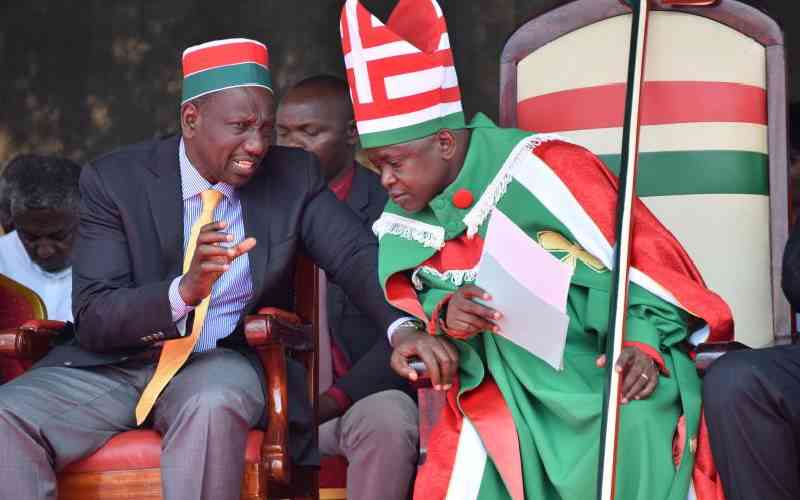Mzee Festus Mzungu has for decades agonised on how to deal with giant baobab trees that dot his 10-acre land in Majajani village, Kilifi County.
It costs at least Sh30,000 to uproot a centuries-old baobab tree and on Mzungu’s farm, there are five of them which means it would cost him approximately Sh150,000 to rid his farm of the ‘unwanted inhabitants’.
“These trees occupy almost a quarter an acre due to their size and one of the reasons we don’t like them is that they affect other crops so it is really hard for crops to survive around the area they occupy. The value of my land has also dropped as no one wants to buy a land that has baobab,” said Mzungu.
Mzungu’s land borders the newly tarmacked Mariakani–Kaloleni–Mavueni road where the price of a quarter an acre currently stands at Sh1.5m but he says the value of his land has remained static for years.
There is also the social aspect which worsens the situation for him and other farmers whose lands these trees inhabit. Locals have for long regarded baobab as a demonic tree.
About 30 kilometres from Mzungu’s farm, another farmer Chai Chivatsi is also facing a similar dilemma.
“We are literally helpless as these trees don’t add any value to our farms, the trees occupy such huge spaces on our land yet there are no returns as the market for the fruits is limited and largely run by middle men who only add insult to injury by exploiting us,” said Chivatsi.
Mzungu and Chivatsi, however, have a reason to smile as the trees they once saw as valueless and a source of nuisance could soon turn into money makers.
In a new plan by Jomo Kenyatta University of Agriculture and Technology (JKUAT) in partnership with Wild Living Resources, the farmers are undergoing training on different ways to make the trees more profitable.
Under the Bao-food Project, JKUAT and its partners are working with the community to revamp the baobab sector in the region.
“The project aims at sensitising the community on the different products that can be made from baobab fruits, their nutritional value and good crop husbandry. But we also plan to link them up with the market as the sector has for long been run by middlemen,” said Dr Tunje Pole, a consultant contracted by Wild Living Resources to develop training materials for the farmers.
The project targets 200 farmers in the semi-arid areas of Kilifi County.
Most of the baobab trees in these farms are approximately between 60-100 years old.
Chivatsa who has already been trained and is now training his peers, says since the project begun, the residents’ perception towards the trees has changed.
“So far over 80 farmers have been trained and we hope to form a Savings and Credit Cooperative Organisation to better support all the farmers,” said Chivatsa.
Stay informed. Subscribe to our newsletter
One of the key things the project seeks to achieve is establish a centraliased market with a storage facility to discourage farmers from selling directly to middlemen.
“Through such interventions we expect the price of a 90Kg sack of the seeds to increase from the current Sh300 to about Sh1, 500,” said Chivatsa.
According to Joseph Tunje, also a consulatant, despite the trees’ myriad benefits, only its fruits and seeds are utilised.
“Only the seeds are eaten like sweets or used to generate super foods. Other parts of the tree remain unexploited,” he added.
Tunje says baobab seeds are a good source of cosmetic oil while the husks can be used to generate renewable fuel. The leaves’ medicinal value is unrivaled.
It takes the tree about 60 years before it starts to produce fruits and seeds. In South Sudan and West Africa, baobab leaves are a delicacy.
“At the moment our focus is to sensitise farmers on the different ways they can reap from the trees already in their farms but we are also researching on varieties that mature fast,” added Tunje.
One tree of baobab produces an estimated 4,000 pods, which translates to about 630 kilogrammes of seeds. Baobab fruit dries naturally on the branch. A 90kg sack of baobab pods currently go for Sh300.
It is believed that the tree’s pulp also has high protein content than milk, vitamin C, magnesium, more iron than red meat and more potassium than a banana.
 The Standard Group Plc is a
multi-media organization with investments in media platforms spanning newspaper
print operations, television, radio broadcasting, digital and online services. The
Standard Group is recognized as a leading multi-media house in Kenya with a key
influence in matters of national and international interest.
The Standard Group Plc is a
multi-media organization with investments in media platforms spanning newspaper
print operations, television, radio broadcasting, digital and online services. The
Standard Group is recognized as a leading multi-media house in Kenya with a key
influence in matters of national and international interest.
 The Standard Group Plc is a
multi-media organization with investments in media platforms spanning newspaper
print operations, television, radio broadcasting, digital and online services. The
Standard Group is recognized as a leading multi-media house in Kenya with a key
influence in matters of national and international interest.
The Standard Group Plc is a
multi-media organization with investments in media platforms spanning newspaper
print operations, television, radio broadcasting, digital and online services. The
Standard Group is recognized as a leading multi-media house in Kenya with a key
influence in matters of national and international interest.








